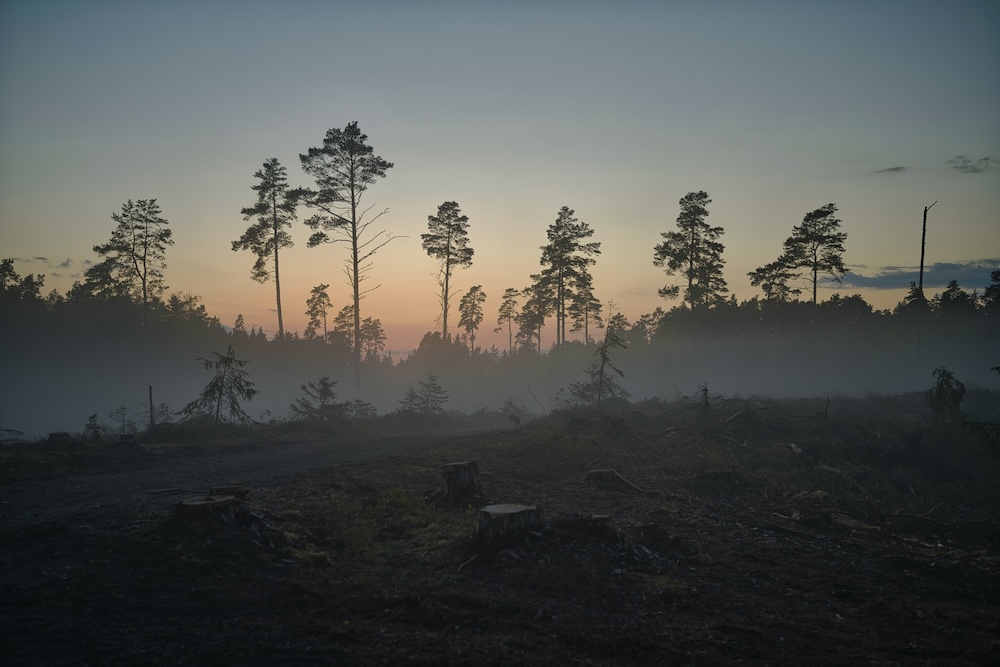David Clubb makes the case for presumed consent for community energy projects
My first hands-on experience with renewables was at Sunseed in 2004
I’ve been working in the renewable energy sector since 2004. Of the thousands of people I’ve met during that time, I’ve never encountered anyone who opposed community energy.
Even the anti-wind die-hards don’t object to community energy — as long as it’s not wind, natch.
You’d think that with widespread public, civic and political support for community energy it would be ubiquitous. But it’s not. Not even close.
Less than 10 MW of Wales’ 2,300 MW of renewable electricity is community-owned. That’s a miniscule 0.4%.

Community energy in Wales has struggled to make much headway
The problem
The problems facing community energy project developers are legion. Not only do they encounter the same issues as commercial developers, such as negotiating planning, consenting, grid and financing issues; they have to do so with considerably less professional support.
Those projects which have seen success are generally by years of hard work from pioneering individuals who have doggedly pursued projects at no personal gain and against overwhelming odds. Take a bow everyone involved with Community Energy Wales.
Community Energy Wales; struggling valiantly against the odds
Sadly there are literally hundreds of projects which never made it to the grid. Many of these were perfectly viable, had huge local support, and could be generating low-carbon electricity right now, returning revenue to the local community and nourishing entrepreneurship, skills and employment. Rejection of a community energy project has sometimes been for fairly unenlightened reasons, such as the perception of visual impact by some of the local councillors who form the membership of planning committees.
Appealing these decisions is often too much to bear for the meagre resources of a community project, and the idea, and all the good things embodied by it, can fall.
The barriers, predominantly in the planning system, which for the most part serve to protect and enhance our built environment, are crippling the ability of our communities to benefit from the energy generated from our natural resources.
The current policy levers have manifestly failed to add sufficient weight in the planning system to enable community energy projects to flourish. We need a new solution.
The solution?
Here’s my suggestion. Let’s reverse the normal way of doing things. Instead of considering genuinely community-owned projects as unwelcome intrusions into the landscape, let’s help them through the process. The time has come to put issues of project ownership into the planning system.
Projects such as community energy installations – and indeed commercial/community partnership projects – potentially have such intrinsic value to society that we should challenge the planning system to say why they should not take place.
Of course having a different planning process for community energy alone would be a needless bureaucratic burden if the existing system were able to provide the same outcomes. So I’m not proposing a separate system.
Instead we should give material consideration to the ownership of renewable energy projects, such that considerable additional weight is given to a wholly community-owned energy project, or one which delivers significant local benefits through joint ownership models.

We need to support community energy — and also commercial projects of all scales
I’m most definitely not saying that we should make things any more difficult for commercial developers. The terrible imperative forced on us by the impacts of climate change mean that we should be pursuing every reasonable measure to mitigate future greenhouse gas emissions — which means being resolute in our determination to proceed apace with renewable energy deployment at all scales, including the very largest projects offshore and onshore.
But community energy’s lack of success suggests that it needs a little extra if it’s to deliver anything substantial over the next few decades.
Test it
There are big conceptual challenges with a change to the system of this nature. So one possible approach is to take a discrete geographic area and pilot the approach.
This area could be a local planning authority boundary, an enterprise zone, a city region or other target geography.

Swansea Bay City Region. A potential target for community energy innovation? (Photo)
Examples that spring to mind are the Swansea Bay City Region, the three energy enterprise zones (Ynys Môn, Haven Waterway and Eryri), the south Wales valleys (covered by the Ministerial Taskforce), the Dyfi Biosphere or Pen Llŷn.
What would it mean?
Presumed consent would immediately accelerate the deployment of community energy in Wales. The barriers would lower on a number of fronts:
- Reduced planning risk would incentivise more communities to consider developments in their area
- A greater material weight in planning would increase the number of successful projects, and lower the cost of all projects due to lowered cost of finance
- Any area which was identified as having better planning opportunities for community energy would attract significant interest, investment and expertise from within and outside those areas, increasing the number of project applications
I believe that nascent models of commercial-community partnership should also be encouraged under this system. We could generate a very lively debate about the level at which ownership triggers the ‘material weight’ condition – although the detail of these important sub-aspects of the Doctrine would necessarily have to be explored in much greater depth once the principle was accepted.
Potential issues
The impact of a proliferation of community or joint-venture projects would need to be carefully and strategically managed.
Local residents would need to be involved at all stages of the development of such a pilot, and the route to an easier ride through planning should require a quid pro quo of a binding commitment to local procurement.
Strong links with the regional further education providers would demonstrate the career pathway for young people, further enhancing the positive reputation of the sector.
However the potential downsides would — I believe — be strongly offset by the multiple advantages of having a thriving community energy sector.
The philosophical barrier to progress
When I’ve previously suggested presumed consent for community energy projects to people in the planning profession it has been met with something akin to disbelief.
One of the fundamental tenets of planning is that projects should be judged entirely on their merit. Ownership of a project clearly has no bearing on planning issues such as visual impact.
This means that — in suggesting that ownership of a project should have weight in planning — I am explicitly stating that one of these fundamentals of the planning system should be rejected.
I don’t shy away from this.
The exercise of planning policy in the community energy sector thus far has served the exact opposite. It has fed the process, and nearly obliterated the outcome.
The planning system is not a divine precept. It is human-created, and should exist to serve the people.
How do we make it happen?
A pilot community energy zone will not happen of its own. We need to provide informed opinion which can challenge the philosophical objection to ownership having a material weight on a project. We also need evidence on how and why the current system is failing the sector.
I suggest that Community Energy Wales works with as many organisations as possible to build the case. This will almost certainly require the opinion of academic planners, practicing planners or legal experts, possibly supported by a crowdfund.
With a well-crafted opinion, the sector will be in a place to make a strong case for a pilot zone.
No doubt there will be plenty of devil in the detail, but the potential prize for the people and communities of Wales is substantial.






Comments are closed.